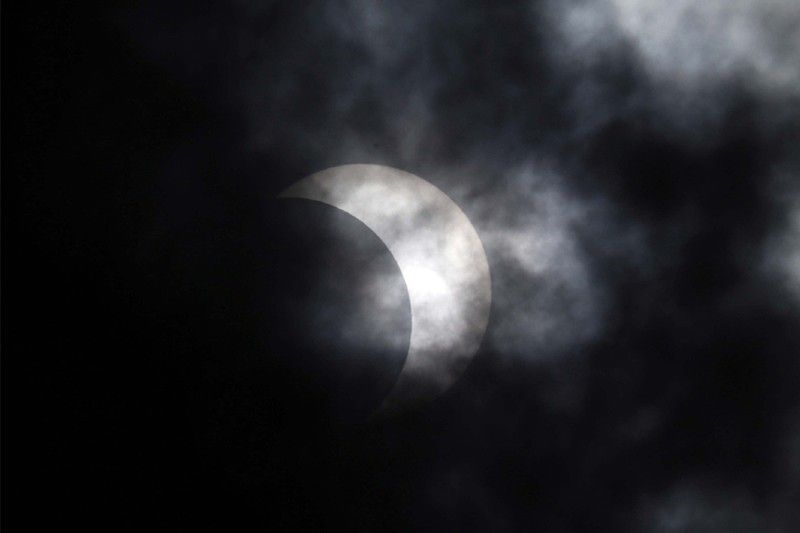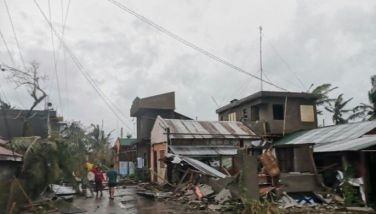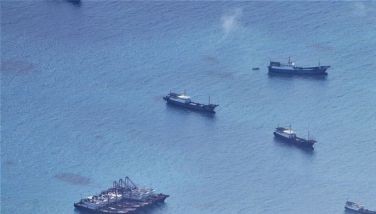Clouds 'eclipse' visibility of rare annular solar eclipse in the Philippines

PANGASINAN, Philippines — The observation of the annular (ring-shaped) solar eclipse on Thursday, where the distant moon blocks only a portion of the sun and forms a “ring of fire,” was overshadowed by cloudy skies in the Philippines and other parts of the world on Thursday.
????At least got a tinnie tiny bit of it.. Masaya na ko#solareclipse2019 pic.twitter.com/fLODjx6mEl
— ???????????????????????????? ???????????????????????? 24 (@MidoriEmerald) December 26, 2019
Like many Indians, I was enthusiastic about #solareclipse2019.
— Narendra Modi (@narendramodi) December 26, 2019
Unfortunately, I could not see the Sun due to cloud cover but I did catch glimpses of the eclipse in Kozhikode and other parts on live stream. Also enriched my knowledge on the subject by interacting with experts. pic.twitter.com/EI1dcIWRIz
PAGASA's Astronomical Observatory earlier said that the rare celestial event could best be appreciated in Mindanao, particularly the southernmost part of Davao Occidental, since it will only be seen as a partial solar eclipse from any other vantage point in the country.
Captured time: 2:19 pm
— Ricardow (@Ricard_OwO) December 26, 2019
Maximum Eclipse here in Manila ????#solareclipse2019 pic.twitter.com/MZCIx0EBcC
However, social media users from different parts of Luzon, Visayas, and Mindanao alike have posted pictures where clouds appear to either partially or totally block the image of the eclipse.
so pinikchuran ko ung eclipse, nadisappoint ako kasi cloudy. tas pagcheck ko ng photo, hala may lumabas na parang crescent shape na emme. parang glare or sumthn hahaha galing pic.twitter.com/nH9y1oo8oW
— Chad Booc ???? (@KasamangChad) December 26, 2019
Manage to witness #solareclipse2019 and took some pictures of it from my balcony..its a cloudy noon tho.. pic.twitter.com/69QSRn4DO1
— marrieX1yohanna (@marriekyh) December 26, 2019
PAGASA on Thursday reported cloudy skies with scattered rains over Central Luzon, Metro Manila, Rizal, and Northern Quezon as Typhoon Ursula (international name: Phanfone) remains in the Philippine area of responsibility.
With the help of clouds???? #solareclipse2019 pic.twitter.com/ceuj4TLhEh
— xcgcx (@cgeniusz) December 26, 2019
Online users also posted memes to summarize their anticlimactic observation of the eclipse.
Expectation vs Reality#solareclipse2019 pic.twitter.com/n9wb0w2K8Q
— Bijayyy (@JayDiana1) December 26, 2019
me wanting to
— madeleine. (@purpleyue_) December 26, 2019
witness the the clouds#solareclipse2019 pic.twitter.com/1GfMBEVcX3
The last time the Philippines saw an annular solar eclipse was 75 years ago on Jul. 20, 1944.
The next opportunity to witness an annular solar eclipse is on Jun. 21, 2020, but it will only be partially visible.
- Latest
- Trending



































